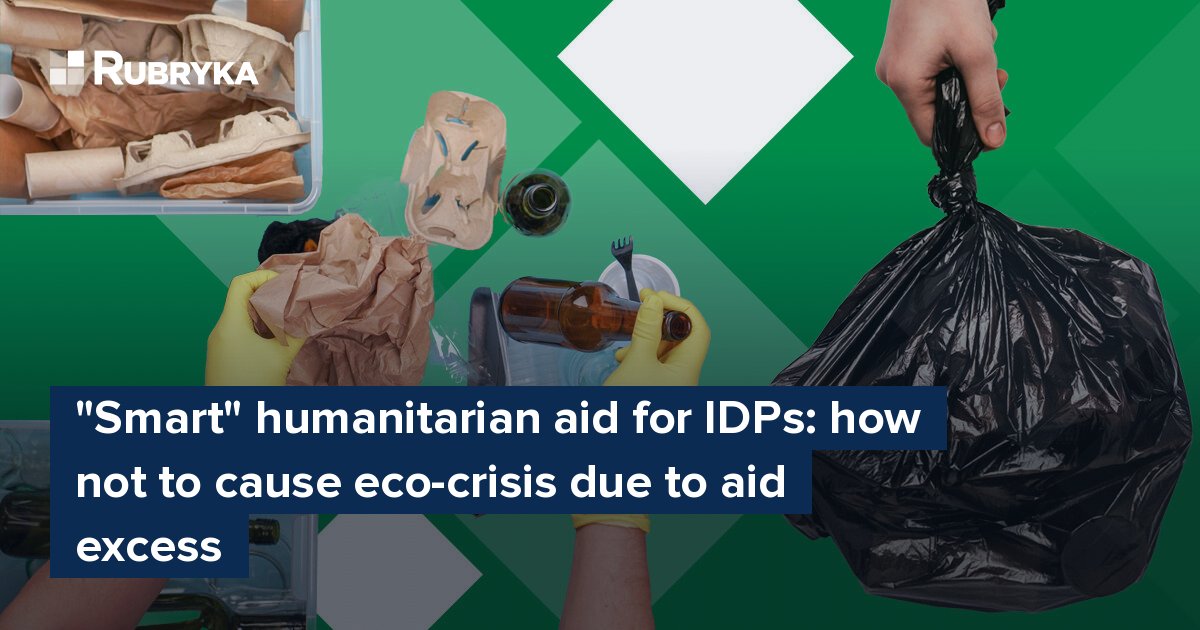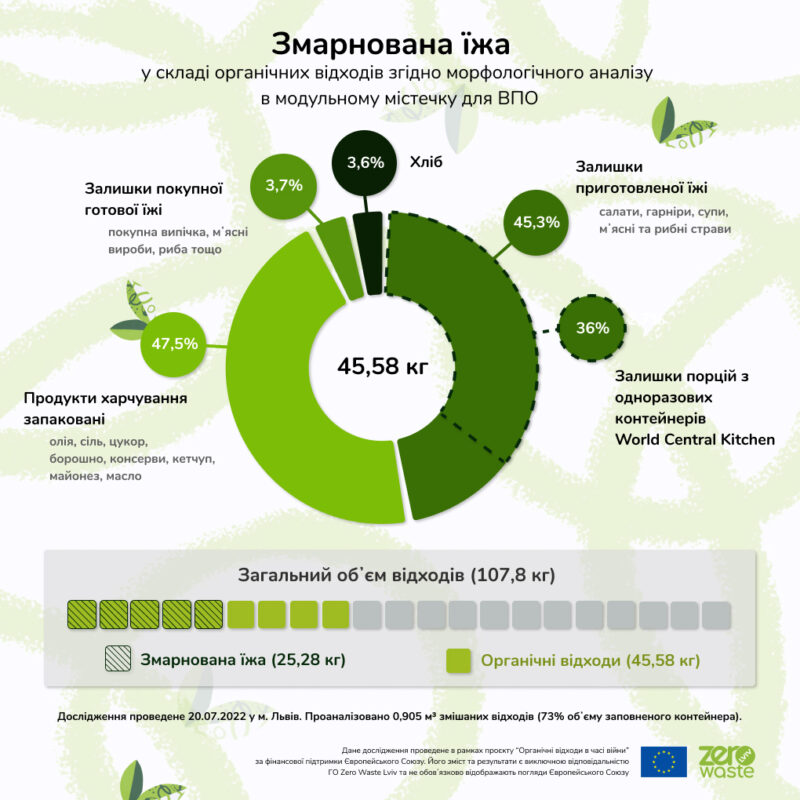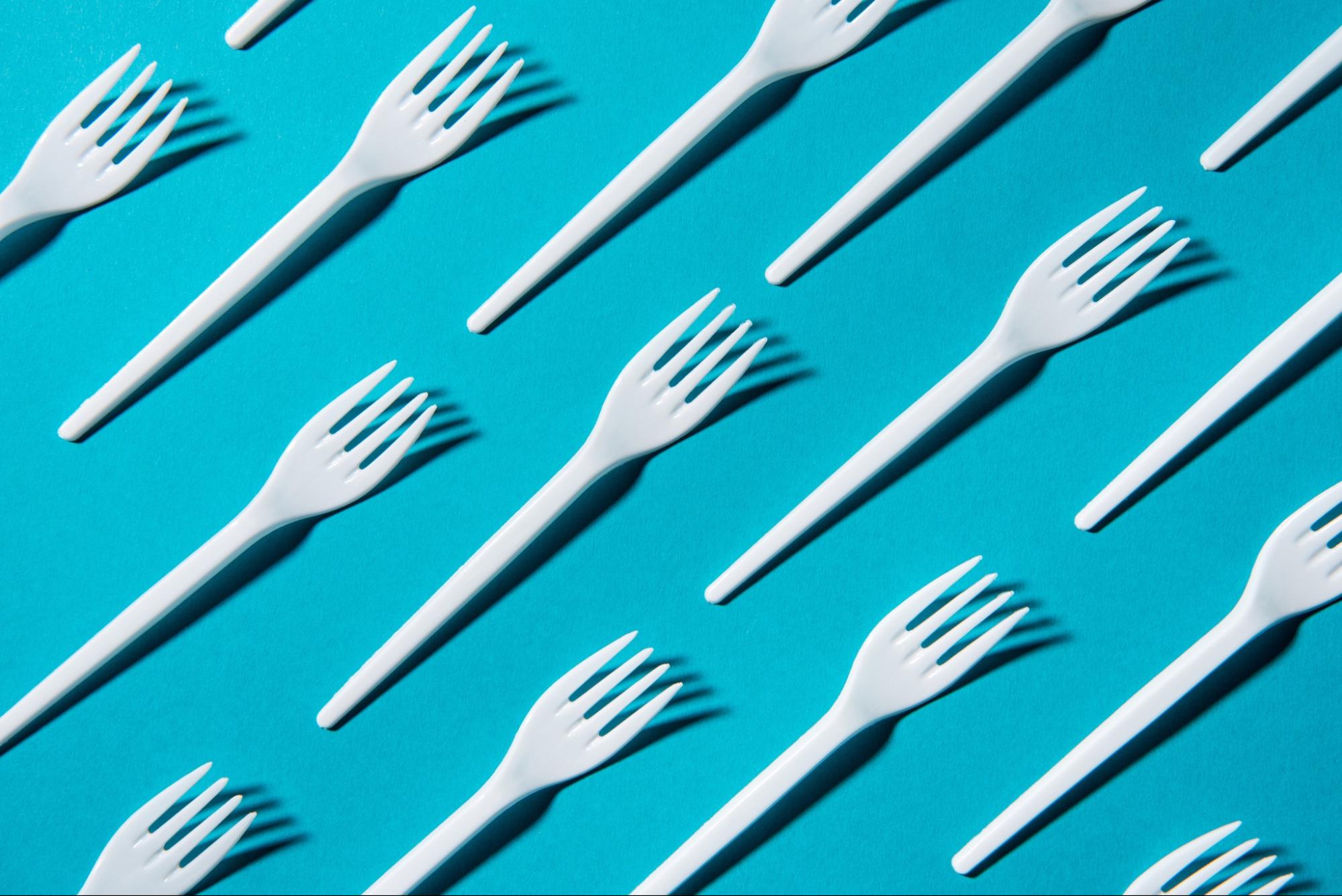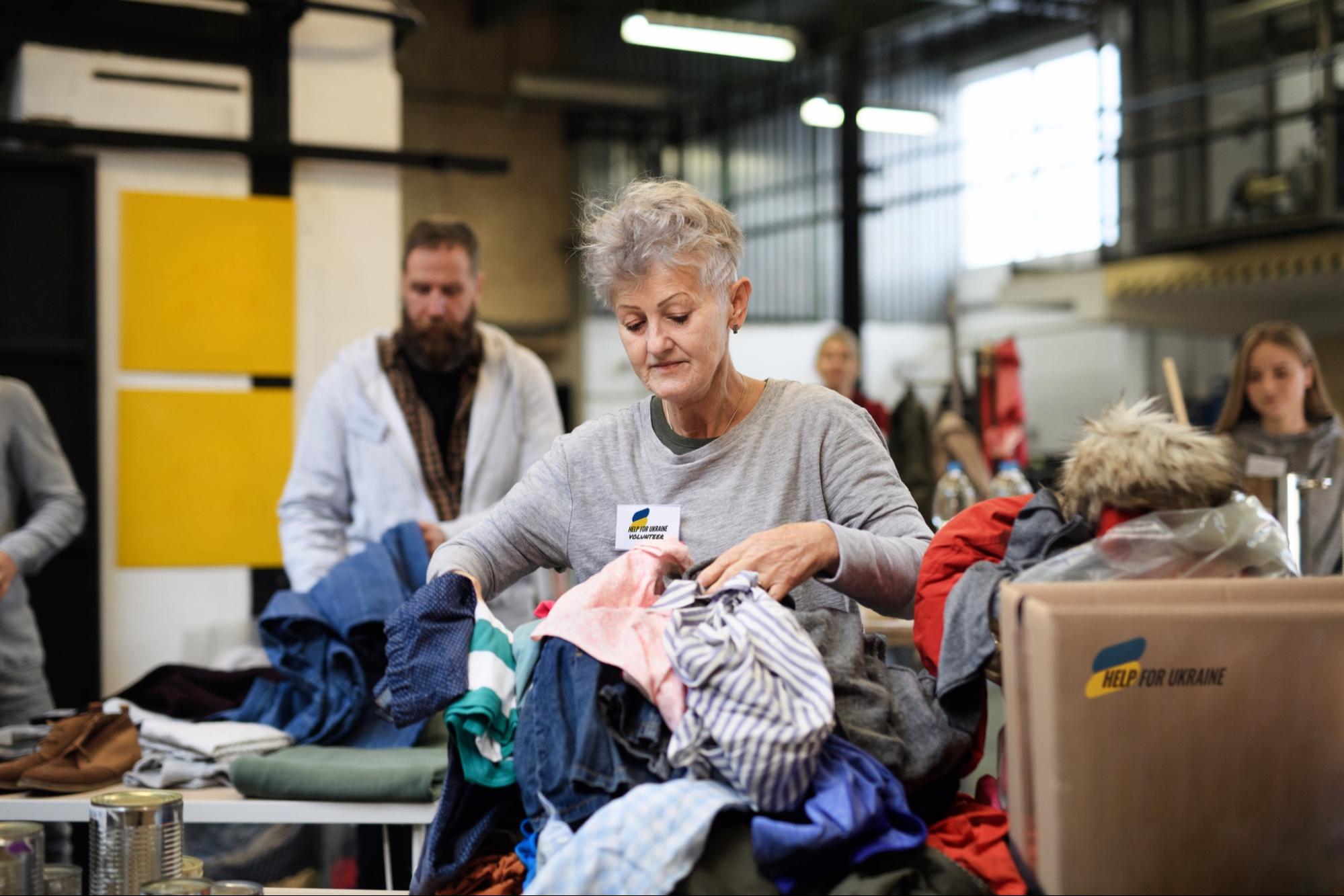
What is the problem?
With the start of a full-scale war, many things have changed for millions of Ukrainians: the place of residence, the list of priority things, and consumer habits.
At the same time, activists say they encountered a large amount of new, not quite typical waste—who would have thought that humanitarian aid and wasted long-term storage products were a huge problem? Activists say they found that the trash contains many used plastic dishes and clothes given to the displaced people. It doesn't mean that you should stop helping those who need help. But it is a reason to think about the approach to the disposal of unnecessary things and environmentally-friendly humanitarian aid.
The ZeroWaste Lviv organization conducted this research and made relevant conclusions by examining the morphological composition of waste in a modular town in Lviv, where internally displaced persons currently live temporarily. Environmentalists experimented: they waited until the garbage cans on the town's territory were packed and then divided this waste into fractions, measuring the weight, volume, and ratio.
One of the most voluminous fractions turned out to be disposable containers and, unexpectedly, clothes.
Almost half (47%) of the organic waste was unpackaged long-term storage products—oil, salt, sugar, canned food, ketchup, mayonnaise, and butter.
You can guess that such products got into the town as humanitarian aid and, just like the clothes, went into the trash. Specialists from ZeroWaste emphasize that it is a common situation for disasters and humanitarian aid sent to victims. It is what charity organizations call a "second disaster." Similar situations arise when donors have wrong ideas about needs or send help without prior agreement. As a result, volunteers have to solve new problems: how to optimize, store and dispose of irrelevant things.
What is the solution?
Help thoughtfully. Any help is essential, but the key is that people should need it. Environmentalists advise adhering to a few simple principles in distributing humanitarian aid so that it helps its recipients and doesn't harm the environment.
Avoid plastic containers
To prevent such massive waste, the ZeroWaste organization purchased and provided reusable food containers with vacuum lids (mermites) to restaurateurs who offer free food for IDPs, volunteers, the Ukrainian army, territorial defense, etc., for free use. This initiative made it possible to significantly reduce daily expenses for disposable dishes in which they delivered food earlier. As a result, we avoid the accumulation of waste (used disposable containers) and reduce the volume of garbage removal and the number of shifts to remove it. According to average calculations, one such mermite is paid off in 12 days.
Remove, use, recycle and reuse
One of the UN's sustainable development goals is to create a circular economy that involves reusing and recycling things. By applying these principles, we can significantly reduce the burden on natural resources and extract them much less. This applies not only to recycling plastic and glass but also to the correct clothing disposal. In addition, to reduce the burden on the public infrastructure, we should also use fewer non-recyclable items. For example, you cannot recycle disposable dishes because they remain dirty after use, even if they are made of paper.
Provide humanitarian aid properly
When volunteers receive clothing, food, and other items in packages, they must sort them. Some things turn out to be unsuitable, so before you donate humanitarian aid, try to answer a few questions:
Are these things relevant now?
Just because people have lost everything doesn't mean they need everything immediately—a fundamental principle to keep in mind, especially if you're planning to pass on secondhand items. For example, suppose you are sorting out your wardrobe in the fall. In that case, you shouldn't hand over unnecessary summer things to the IDPs: nobody needs them in the winter, so people will have to store them somewhere, and they don't always have suitable opportunities.
Are these items reusable?
Clothes and shoes should be clean and comfortable, and household items and appliances should be functional and ready for use. Give only those things that you would like to receive yourself. Humanitarian aid is not a way to get rid of unnecessary items and free up space in the closet. Helping with things is essential, but allowing the victims to maintain their sense of self-worth is even more critical.
Tip: Sometimes, money will be more helpful than things. Helping with items or products is irreplaceable when purchasing what you need locally is impossible. But sometimes it's better to buy the necessary stuff through local organizations. The products or means purchased this way will be fresh, in the right quantities, and delivered quickly. And most importantly, they will be relevant to people who need them because volunteer organizations on the ground know what is required. Such local purchases also support local entrepreneurs, which in the long run strengthens the local economy.
Even more helpful solutions!
What you no longer need is for reuse or disposal
- Give old things for raw materials for weaving camouflage nets for military equipment. Find out from the city headquarters and volunteers of your city whether they accept "raw material" and give it to them. Maybe your Yoda t-shirt could save someone's life.
- Offer your clothes to someone on social media. You can give them away for free or sell them because this secondhand is also reusing things.
- Dispose of things properly. If you look at the composition of the thing you are currently wearing, you will hardly find an inscription that the item is 100% made of some particular material. Most likely, you will see a mixture. "Non-clean" materials are not recyclable but make up a large portion of waste, as shown in the ZeroWaste research example. There's a way out. If you cannot recycle the thing, it can be correctly disposed of by burning. But! One can do it only in special ovens with very high temperatures. You can do this by handing over unnecessary things to Kyiv's No Waste Ukraine organization. You can bring them yourself or send them by mail.











